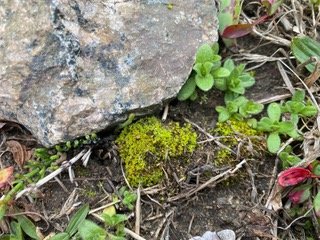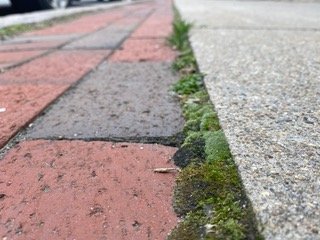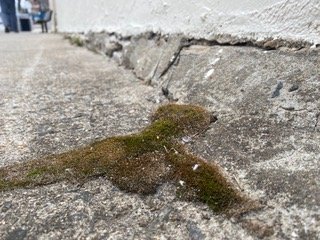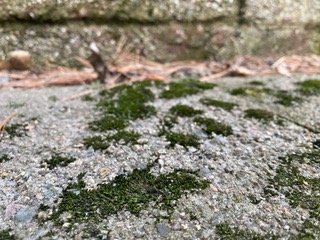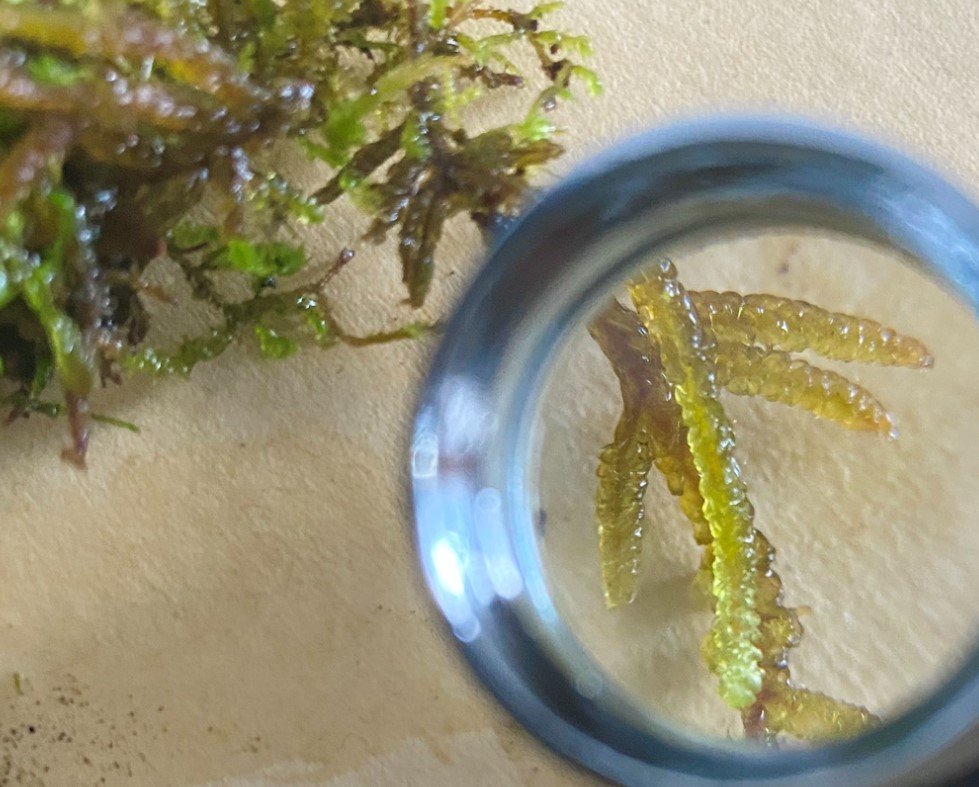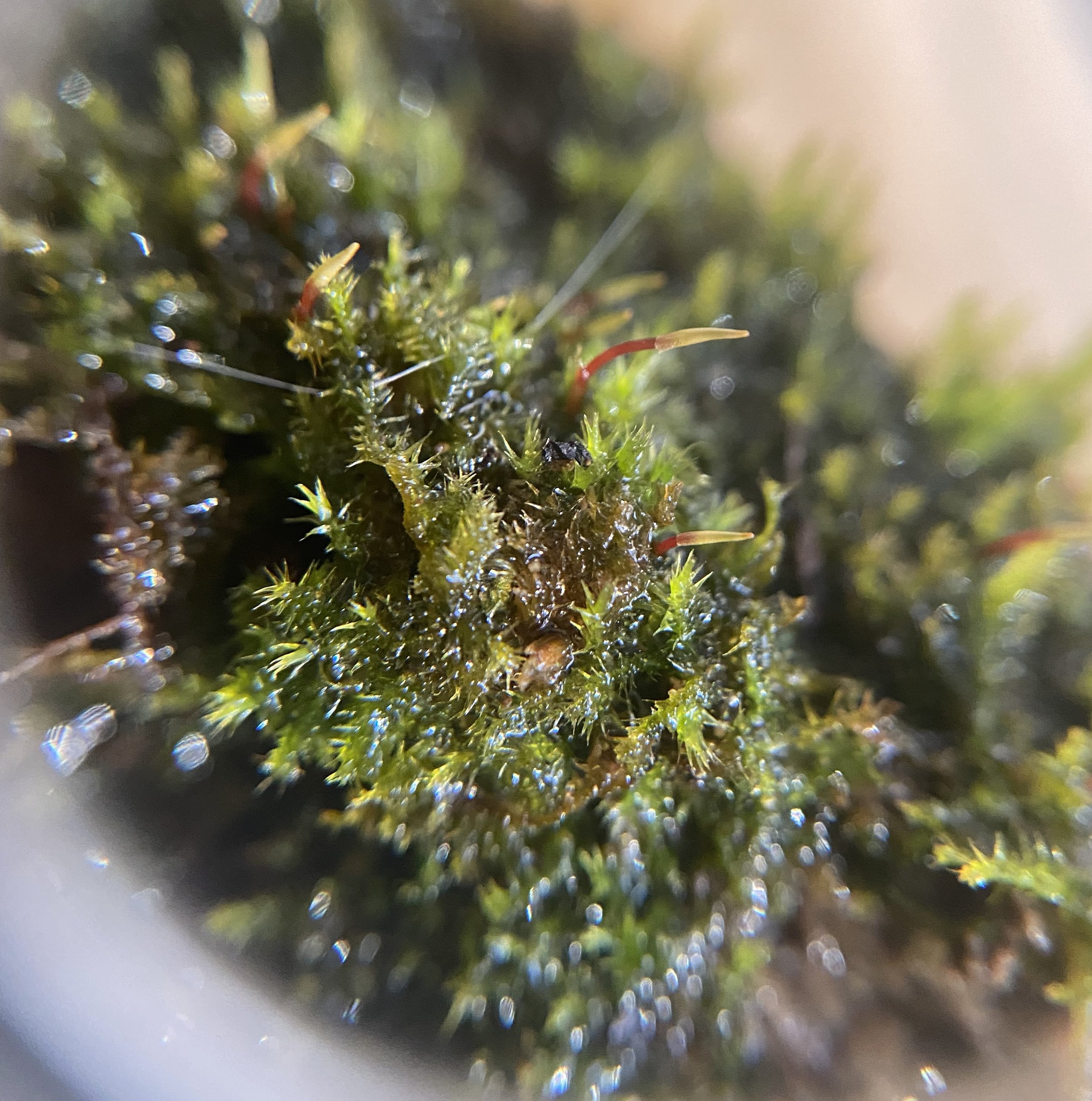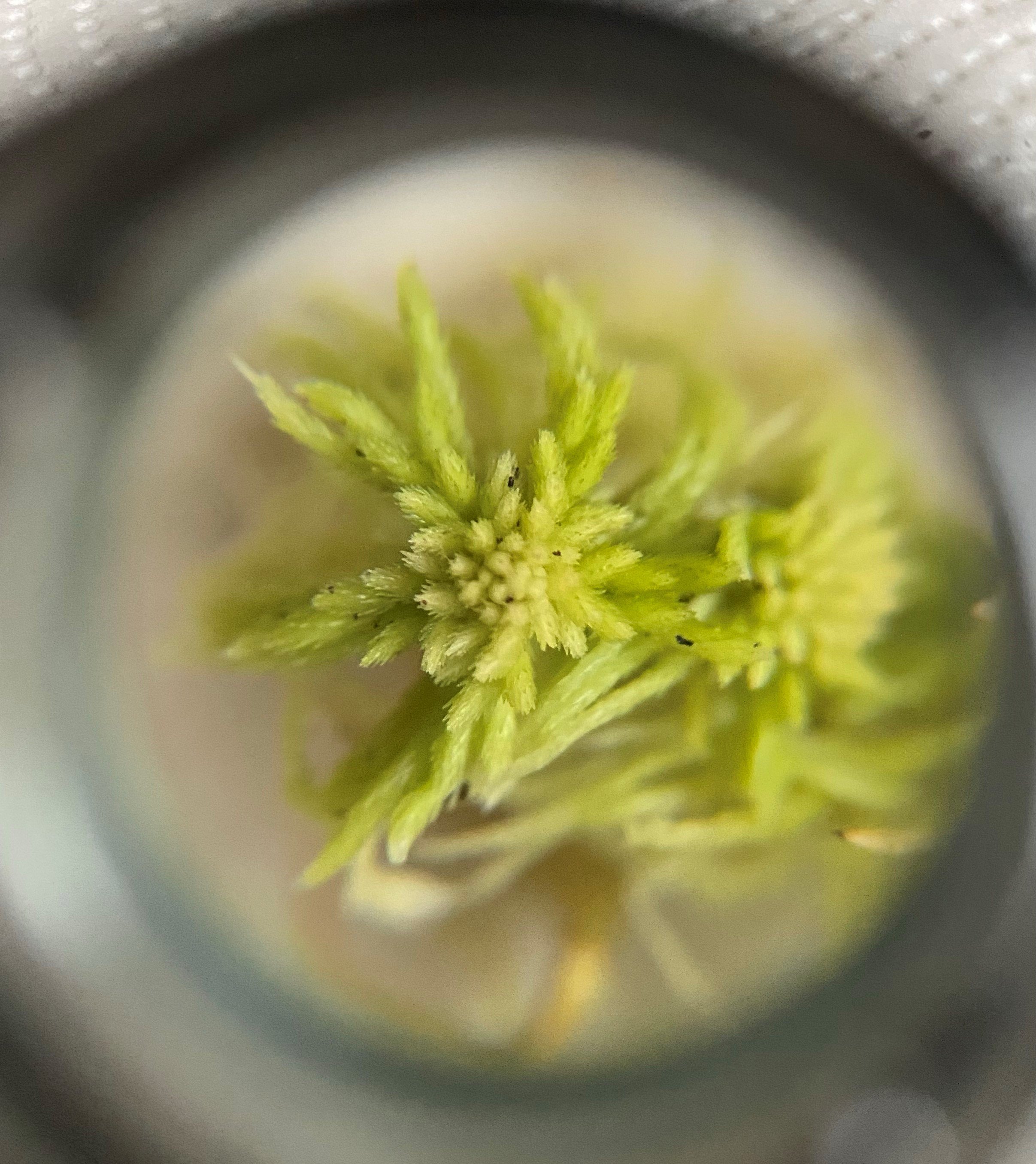By Erica Wood
Despite being the most densely populated and urbanized watershed in New England, the Mystic hosts an astonishing amount of plants and wildlife—if you know where to look. In the spring, red-winged blackbirds signal the change of season and Torbert Macdonald Park suddenly hosts tree sparrows, warblers, and American woodcock. Right now, hundreds of thousands of river herring and thousands of American eel are migrating upriver to the Mystic Lakes. Summer brings nesting bald eagles, and the busy muskrats become apparent, collecting woody debris along the shore. These wildlife phenom are spectacular and deserving of all the awe they garner. However, one magnificent group of specimen is nearly always ignored—the mighty mosses. From the Middlesex Fells to the most developed parts of our cityscape, mosses can be found throughout the watershed.
Mosses exist almost everywhere we look, standing at attention in city sidewalk cracks, perching on tree branches and tombstones, gracing boulders and streams. These tiny creatures are so commonplace we gloss over their presence, unaware of the magic each tuft or trailing braid may bring. I was an offender—but that was the ‘before times’. Back before I truly met the stunning, diverse architecture of their branch arrangements, their alien-like evolutionary adaptations, or their important ecological roles, mosses were simply out of my conscious awareness. You could find me beaming in awe at shaded trailside moss carpets, the silky mats sprawling and regal. I did not, however, see the remarkable beauty and resilience of the moss right outside my door. Once you tune into these microhabitats your eyes, like mine, will open to a complex world that has always been around, and you didn’t know existed.
There are more than 20,000 species of bryophytes, aka mosses. With the naked eye you can detect many of their delicate differences. Some mosses are large, woven carpets of shiny, intricate branches, miniatures of feathery ferns. Other mosses are small, erect cushions with black, crusty leaves shriveled into tight cords.
Orthotrichum Anomolum, crispy tombstone moss
Thuidium delicatulum, delicate fern moss
The next serendipity arrives when you observe a bryophyte underneath the microscope. The color spectrum will shock you—mosses come in rust, copper, forest, chartreuse, maroon, white, grey, black, brown, true Kelly green and more. These rich tones will delight even the most seasoned leaf peeper. You’ll meet the paraphyllia, the alien-looking threads built to retain moisture. The moss’s leaf shape—tear drops, sharp triangles, lanceolate, oval—becomes apparent; the branching structure—rod-like, pinnate feathers, or spiraling whorls—become complex roadmaps showcasing yearly growth and environmental adaptations. Textures alone may intrigue you: toothed margins, ridges and hollows, bumpy nodules, or needlelike hair tips on the leaves.
Elongated alar cells at base of leaf, specimen unknown
Toothed margins and papillate (bumpy) leaf cells of Plagiomnium spp
Jewel-like branchlets of Brachythesium spp
If you’re anything like me, the surprises will repeatedly thrill you. For example, a compound microscope allows you to see the alar cells, elongated “water balloons” at the base of the leaf. When these cells are empty, the leaf may wilt towards its stem. When full of water, the leaf stands erect, paying homage to the sun. These alar cells are apparent under the scope.
Mosses are some of the most stress tolerant creatures on the planet, and many of these identifying features are there to help them best survive in an unpredictable and unstable world.
One could learn from them. Though their ancestors are humble algae, mosses are anything but archaic. Whether it’s the jewel-like braid, gelatinous and succulent, glittering, translucent leaves, or those ‘water balloon’ cells, these evolutionary features bring me into a world of awe and curiosity. A little gift, packaged in cellulose and water.
I spent time with family recently, espousing my love for the mosses outside our window. During their inquiry, one theme bubbled to the top: “But why do mosses matter? Why should I care?”
There are many reasons. For one, mosses are incredible bioindicators of air quality. In urban areas, the presence or absence of some moss genera (Ulota, Orthotrichum) can tell you the degree of air pollution and acid rain. Mosses have been sent to space with astronauts due to their resilience and irreplaceable role in primary succession, their ability to create favorable habitats for other plants through their own biogeochemical processes. They are incredible carbon sinks, making them an important resource in the fight against climate change. Their stunning diversity adds beauty to the world—and I think that’s pretty important.
Want to learn more? Grab a 10x hand lens and Mosses of the Northern Forest: A Photographic Guide, by Jerry Jenkins and you’re off to a great start. There are many throughout the watershed. If you’re ever inclined to take a sample of a specimen, be kind. Only take a small piece (a patch the size of a quarter or less), take from the edges (not the middle), and don’t take it if it’s the only one around.
Honor these small friends simply by noticing; acknowledging their journey and contribution.
About the author and photographer
Erica Wood is an Alaska Native-Appalachian scientist and storyteller. She is pursuing her Master’s of Science in Conservation Biology focusing on plant ecology and restoration at SUNY ESF. Erica is a Sloan Indigenous Fellow and works under the advisory of esteemed Native author and botanist Dr. Robin Wall Kimmerer. Prior to beginning her studies, Erica lived in Medford and worked at the Mystic River Watershed Association. She relocated from Greater-Boston to Syracuse with her husband and cat in early 2022.
*All photos belong to the author.

